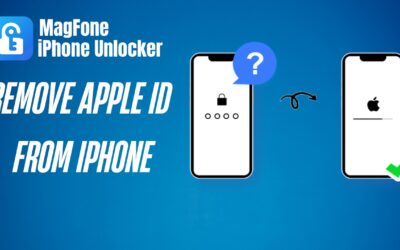Social Engineering: How Hackers Manipulate People to Steal Information
When we think of hackers and cyberattacks, we often imagine complex codes and advanced malware. However, the most effective way to steal information isn’t technology—it’s psychological manipulation.
Social engineering is a technique used by hackers to deceive people into revealing confidential data. From fake emails to fraudulent phone calls, these attacks can compromise passwords, bank accounts, and personal information.
In this article, you will learn:
✅ What social engineering is and how it works.
✅ The most common attacks and how to avoid them.
✅ Real-life examples of scams and famous hacks.
✅ Tips to protect yourself from digital manipulation.
If you want to avoid falling victim to online deception, keep reading. 🚀🔐
1. What Is Social Engineering and Why Is It Dangerous?
Social engineering is the art of manipulating people to obtain confidential information. Instead of hacking computer systems, attackers exploit human trust and negligence.
📌 Real-world example: In 2020, a hacker gained access to Twitter by impersonating an employee. This allowed them to take control of verified accounts and post cryptocurrency scams.
💡 Shocking Facts:
🔴 90% of cyberattacks involve some form of social engineering.
🔴 66% of companies have been victims of these attacks.
🔴 More than 95% of people have received phishing attempts at least once.
Social engineering attacks are effective and hard to detect because they don’t rely on technical vulnerabilities but on human behavior.
2. Common Types of Social Engineering Attacks
🔹 2.1. Phishing: The Most Common Scam
Phishing attempts to trick people into entering private information on a fake website or sharing personal data.
📌 Real-world example: You receive an email from “your bank” stating that your account has been locked. They ask you to click a link and enter your password on a fake site.
How to protect yourself:
✅ Don’t click on suspicious links.
✅ Always verify the URL before entering credentials.
✅ Enable two-factor authentication (2FA).
🔹 2.2. Vishing: Phone Call Scams
Vishing (voice phishing) occurs when a scammer calls pretending to be from a bank, company, or tech support.
📌 Real-world example: A “Microsoft support agent” calls, claiming your computer is infected. They ask you to install software that actually gives them remote access to your device.
How to protect yourself:
✅ Never share personal information over the phone.
✅ Be skeptical of unexpected calls from banks or companies.
✅ Verify directly with the company before following instructions.
🔹 2.3. Smishing: Fraudulent Text Messages
Smishing is a variation of phishing where hackers use fake SMS messages to deceive victims.
📌 Real-world example: You receive a text from “DHL” saying you have a pending package and need to click a link to track it. If you do, your phone gets infected with malware.
How to protect yourself:
✅ Don’t click on links in SMS messages from unknown senders.
✅ Contact the company directly to verify the message.
🔹 2.4. Pretexting: Creating Fake Scenarios
Attackers invent a story to gain your trust and extract personal data.
📌 Real-world example: A hacker pretends to be an HR employee and asks for your credentials for a “system update.”
How to protect yourself:
✅ Don’t share information without verifying the requester’s identity.
✅ Always confirm with the company before giving out any data.
3. Real-Life Social Engineering Attacks
🔹 3.1. The Twitter Hack (2020)
A hacker convinced a Twitter employee that they were a tech support agent and needed access to internal tools. Once inside, they took control of verified accounts like Elon Musk and Apple, posting cryptocurrency frauds.
🔹 3.2. The Target Data Breach (2013)
Hackers sent fake emails to employees of an HVAC company that worked with Target. One employee fell for the trap, and attackers used their access to steal 40 million credit card records.
🔹 3.3. Kevin Mitnick: The Master of Social Engineering
Kevin Mitnick is one of the most famous hackers in history. In the 1990s, he hacked major companies like IBM and Nokia using only phone calls and deception.
4. How to Protect Yourself from Social Engineering
✅ 4.1. Be Skeptical of Information Requests
No bank, company, or government agency will ask for passwords or sensitive data via email or phone.
✅ 4.2. Use Two-Factor Authentication (2FA)
Even if a hacker obtains your password, 2FA prevents them from accessing your accounts.
✅ 4.3. Check the Source Before Clicking
If you receive an email with a link, verify the address before entering any data.
✅ 4.4. Avoid Sharing Personal Information on Social Media
Hackers use public information to make personalized attacks.
5. The Future of Social Engineering: What’s Next?
📌 Emerging Trends in Social Engineering Attacks:
✅ Deepfakes: Fake voices and videos to deceive victims.
✅ AI-Powered Attacks: Bots designed to mimic humans in calls and chats.
✅ Advanced Identity Theft: Hackers creating ultra-realistic fake profiles on social media.
Conclusion: Social Engineering Is the Biggest Cybersecurity Threat
No matter how advanced technology gets, hackers will continue exploiting human errors. The best defense is education and caution.
💡 Key Takeaways:
✅ Never trust unexpected emails, calls, or SMS messages.
✅ Enable 2FA on all your accounts.
✅ Verify URLs and sources before sharing data.
✅ Never give out sensitive information over the phone or email.
Want more cybersecurity tips? Leave a comment and share this article with your friends! 🚀🔒
Top Video
Youtube
Top Apps – Games
Root explorer
Latest Version – Android
VPN unlimited best Proxy
Latest Version – iOS
Quickshort cutmaker
Latest Version – Android
Clone Phone
Latest Version – Android
Genshin impact
Latest Version – Android
Apex Launcher
Latest Version – Android
FrpBypass
Latest Version – Android
Fortnite
Latest Version – Android
Magisk Manager
Latest Version – Android
Call of Duty®: Warzone™ Mobile
Latest Version – Android
Nvidia Geforce Now
Latest Version – Android
Xbox Cloud Gaming
Latest Version – Android
Related Posts
🛰️ LocaChange: El Mejor Cambiador de Ubicación GPS para Android y iPhone en 2025 [Sin Root No Jailbreak ni VPN]
Home » apple- iOS 🛰️ LocaChange For ANDROID iOS MacOS Windows – Latest Version Descarga Windows Buy Now Mac iOS App Android 🛰️ LocaChange: El Mejor Cambiador de Ubicación GPS para Android y iPhone en 2025 [Sin Root ni VPN] En un mundo cada vez más...
Solved! Remove Apple ID from iPhone
Home » apple- iOS MagFone iPhone Unlocker For Windows – MacOS- Latest Version Download Solved! Remove Apple ID from iPhone Removing an Apple ID from your iPhone is a critical process, whether you’re preparing to sell your device, switching to a new...
How to Fix Error 11 and Error 12 in Pokémon GO on iOS with iWhereGO
Home » apple- iOS iWhereGO For Windows – Latest Version FREE .EXE Download How to Fix Error 11 and Error 12 in Pokémon GO on iOS with iWhereGO Fix Error 11 and Error 12 in Pokémon GO Pokémon GO is one of the most popular augmented reality games on mobile...
3uTools For MacOS Latest Version
Home » apple- iOS 3UTools For MacOS FREE .dmg Download Version Windows Exploring 3uTools for macOS: A Comprehensive Overview 3uTools 3uTools, renowned for its robust features on Windows, also extends its utility to macOS users seeking comprehensive iOS device...
3utools Latest Version For Windows
Home » apple- iOS 3UTools For Windows FREE .EXE Download Version MacOS Comprehensive Guide to 3uTools for Windows: Everything You Need to Know 3uTools 3uTools is a versatile Windows-based software tool designed for managing iOS devices such as iPhones, iPads,...
Apple Developer For iPhone iPad Latest Version
Home » apple- iOS Apple Developer for iPhone | iPAd all the languages FREE .iPA Download Apple Developer: Unlocking Innovation in App Development Apple Developer The Apple Developer program is a gateway for developers around the world to create, test, and...














![Social Engineering: How Hackers Manipulate People to Steal Information 86 🛰️ LocaChange: El Mejor Cambiador de Ubicación GPS para Android y iPhone en 2025 [Sin Root No Jailbreak ni VPN]](https://neifredomar.com/wp-content/uploads/2025/11/teleport_mode-400x250.png)



